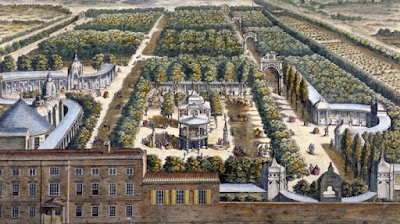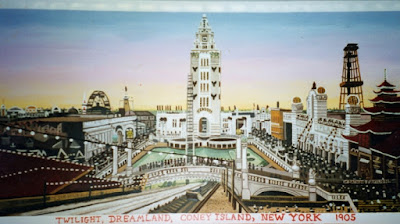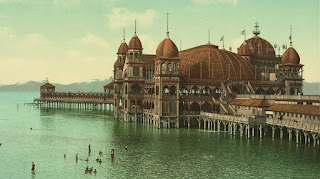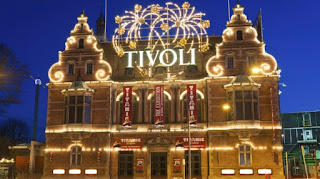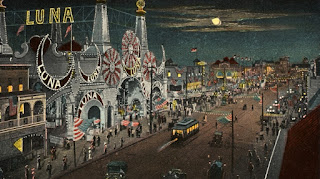10/30/2016
10/27/2016
10/26/2016
10/20/2016
10/18/2016
10/17/2016
Top 10 Funniest Ferris Wheel in the World
Ferris wheel was born in the late 19th century, and was first designed by an American engineer George Ferris for the 1893 World's Columbian Exposition in Chicago. To remember his birth of this great engineer, Russia newspaper makes a list of the funniest Ferris wheel in the world, including the famous “London Eye”, China's “Tianjin Eye” and Singapore's “Flyer” and other Ferris wheel.
The Ferris wheel designed by Mr. Ferris in 1983 was a direct response to the showstopper of the 1889 Exposition in Paris, the Eiffel Tower. Mr. Ferris's wheel was over 260 feet (80 meters) tall, capable of carrying about 2,000 people on it at one time, and its main axel alone weighed more than 71 tons. Since the achievement of Mr. Ferris, people afterwards begin to call “Ferris wheel” as the name of this amusement ride, which is also our familiar Ferris wheel today.
Not long after the death of Mr. Ferris in 1897, people planted to build another Ferris wheel in Vienna according to his plan before death. This Ferris wheel has been reserved until now and become a repute sight spot of Vienna. Until 1985 this Ferris wheel was the highest Ferris around the world.
In 1894, London began to build “giant Ferris wheel”, but this Ferris wheel with a height of 94 meters reserved till 1907. Nowadays “London Eye”, on the side of Thames, reaches up to 135 meters, and you can catch a glimpse of the whole city on it. It now is also the highest Ferris wheel in Europe.
In Paris, France, there is a Ferris wheel which has a height of 60 meters and is movable. It doesn't need a fixed base and can stabilize itself by water tank. This Ferris wheel has been to places like Birmingham, Manchester, and Amsterdam.
Today the highest Ferris wheel is Singapore's Flyer, which is at a height of 165 meters and has 28 cabins. It cost 3 years to finish the construction and was to put into practice officially in 2008.
Situated in Nanchang, China, “Nanchang Star” Ferris wheel is now the second highest Ferris wheel. It is featured on the continuous rotation, about half an hour a circle.
The Ferris wheel in Chicago of America is one of the oldest Ferris wheel existing in the world. It is located near the dock of Lake Michigan, and has lasted for 2 year to accomplish. Thereafter it has been one local scenic spot.
In Japan, there is a Ferris wheel without central axis, and a roller coaster passing through its inside with a speed of 130 miles per hour. It is the present largest Ferris wheel without central axis.
China's “Tianjin Eye” is as high as 120 meters, and it is the only one Ferris wheel constructed on the bridge.
The largest Ferris wheel in Eastern Europe is situated at the expo center of Moscow, Russia in memory of 850 years Since Moscow City was built. It is 90 meters in diameter and 73 meters high, and was finished in 1995 and has 40 cabins. It costs about 7 minutes when the wheel runs a circle.
10/15/2016
6 Early Amusement Parks: Steeplechase Park
Local fairs and carnivals have been around since the Middle Ages,
but modern amusement parks can trace their roots to the 19th century, when
so-called “pleasure gardens” and “trolley parks” first flourished in the United
States and Europe. These early resorts featured primitive—and often wildly
unsafe—roller coasters and rides, but they also included a variety of offbeat
attractions ranging from strongmen and wild animals to freak shows, staged
disaster spectacles and even battle reenactments. Take a trip through six of
history’s most enchanting and influential amusement parks.
Steeplechase
Park
Opened in 1897 by entrepreneur George C. Tilyou, Steeplechase Park
was the first of three major amusement parks that put New York’s Coney Island
on the map. The park took its name from its signature attraction, a 1,100-foot
steel track where patrons could race one another on mechanical horses, but it
also included a Ferris Wheel, a space-inspired ride called “Trip to the Moon”
and a miniature railroad. While Tilyou intended Steeplechase to be the
family-friendly antidote to Coney Island’s seamier side, some rides still
ventured into territory that was risqué by Victorian standards. Attractions
like the “Whichaway” and the “Human Pool Table” tossed strangers against one
another and gave couples an excuse to canoodle, and the wildly popular Blowhole
Theater allowed spectators to watch as air vents blew up unsuspecting female
guests’ skirts. As the ladies struggled to cover themselves, a clown would
shock their male counterparts with a cattle prod. Fire destroyed much of
Tilyou’s park in 1907, but he responded by building a more elaborate
Steeplechase that remained in operation until the 1960s. Ever the showman, he
even charged ten cents for visitors to view the charred ruins of the original
park.
Vauxhall
Gardens
Opened in 1897 by entrepreneur George C. Tilyou, Steeplechase Park
was the first of three major amusement parks that put New York’s Coney Island
on the map. The park took its name from its signature attraction, a 1,100-foot
steel track where patrons could race one another on mechanical horses, but it
also included a Ferris Wheel, a space-inspired ride called “Trip to the Moon”
and a miniature railroad. While Tilyou intended Steeplechase to be the
family-friendly antidote to Coney Island’s seamier side, some rides still ventured
into territory that was risqué by Victorian standards. Attractions like the
“Whichaway” and the “Human Pool Table” tossed strangers against one another and
gave couples an excuse to canoodle, and the wildly popular Blowhole Theater
allowed spectators to watch as air vents blew up unsuspecting female guests’
skirts. As the ladies struggled to cover themselves, a clown would shock their
male counterparts with a cattle prod. Fire destroyed much of Tilyou's park in
1907, but he responded by building a more elaborate Steeplechase that remained
in operation until the 1960s. Ever the showman, he even charged ten cents for
visitors to view the charred ruins of the original park.
Dreamland
Coney Island’s Dreamland only operated for seven years between 1904
and 1911, but during that time it established itself as one of the most
ambitious amusement parks ever constructed. The brainchild of a former senator
named William H. Reynolds, the site included a labyrinth of unusual rides and
attractions lit by an astounding one million electric light bulbs. Visitors to
Dreamland could charter a gondola through a recreation of the canals of Venice,
brave gusts of refrigerated air during a train ride through the mountains of
Switzerland or relax at a Japanese teahouse. They could also watch a
twice-daily disaster spectacle where scores of actors fought a fire at a mock
six-story tenement building, or pay a visit to Lilliputia, a pint-sized
European village where some 300 little people lived full time. Dreamland
featured everything from freak shows and wild animals to imported Somali
warriors and Eskimos, but perhaps its most unusual offering was an exhibit
where visitors could observe premature babies being kept alive using
incubators, which were then still a new and untested technology. The infants
proved a huge hit, but they and many other attractions had to be evacuated in
May 1911, when a fire—ironically triggered at a ride called the Hell
Gate—leveled the property and shut Dreamland down for good.
Saltair
First opened in 1893, Saltair was a desert oasis situated on the
south shore of Utah’s Great Salt Lake. The Mormon Church originally
commissioned the site in the hope of creating a wholesome “Coney Island of the
West” without the perceived sleaziness of the New York original. Their
family-friendly park proved an instant hit, as scores of visitors arrived by
train from nearby Salt Lake City to enjoy music, dancing and bathing in the
lake’s saline-rich waters. Saltair’s most striking attraction was its
gargantuan pavilion, a four-story wonder adorned with domes and minarets that
sat above the lake on more than 2,000 wood pilings. Along with touring this
“Pleasure Palace on Stilts,” visitors could also show off their moves on a
sprawling dance floor, ride roller coasters and carousels, and watch fireworks
displays and hot air balloon shows. The park boasted nearly half a million
visitors a year until 1925, when the iconic centerpiece burned in a fire. A
rebuilt Saltair opened soon after, but it failed to capture the magic—or the revenues—of
the original. The park closed its doors for good in 1958, and its abandoned
pavilion was later destroyed in a second fire in 1970.
Tivoli
Gardens
Denmark’s Tivoli Gardens first opened in 1843, when showman Georg
Carstensen persuaded King Christian VIII to let him build a pleasure garden
outside the walls of Copenhagen. Originally constructed on around 20 acres of
land, Carstensen’s creation featured a series of oriental-inspired buildings, a
lake fashioned from part of the old city moat, flower gardens and bandstands
lit by colored gas lamps. The park quickly became a Copenhagen institution, and
won fame for its “Tivoli Boys Guard,” a collection of uniformed adolescents who
paraded around the premises playing music for visitors. Tivoli later added an
iconic pantomime theater in 1878, and by the early 1900s it featured more
traditional amusement park fare including a wooden roller coaster called the
Bjergbanen, or “Mountain Coaster,” as well as bumper cars and carousels. Tivoli
Gardens was nearly burned to the ground by Nazi sympathizers during World War
II, but the park reopened after only a few weeks and remains in operation to
this day.
Luna Park
Founded in 1903 by theme park impresarios Fred Thompson and Skip
Dundy, Coney Island’s Luna Park consisted of a gaudy cluster of domed buildings
and towers illuminated by an eye-popping 250,000 light bulbs. The park
specialized in high concept rides that transported visitors to everywhere from
20,000 leagues under the sea to the North Pole and even the surface of the
moon. A trip to Luna could also serve as a stand in for world travel. After a
ride on an elephant, patrons could stroll a simulated “Streets of Delhi”
populated by dancing girls and costumed performers—many of them actually
shipped in from India—or take a tour through mock versions of Italy, Japan and
Ireland. If they grew tired of walking, visitors could relax in grandstands and
watch the “War of the Worlds,” a miniature, pyrotechnic-heavy sea battle in
which the American Navy decimated an invading European armada. The park’s
owners also cashed in on the popularity of disaster rides by staging
recreations of the destruction of Pompeii and the Galveston flood of 1900. The
carnage reenacted in these attractions became all too real in 1944, when Luna
fell victim to a three-alarm fire that began in one of its bathrooms. The
original site closed for good a few years after the blaze, but the iconic name
“Luna Park” is still used by dozens of amusement parks around the globe.
10/14/2016
10/13/2016
10/12/2016
10/11/2016
10/10/2016
30 Strangest Rides in the World

Each year amusement parks around the world try to one-up one another
by building bigger, faster and more intense amusement rides. Here, Sinorides takes a look at some of the
strangest, scariest and most innovative non-roller-coaster rides.
1. SkyRoller
Manufacturers have been looking for ways to make rides more
interactive since the late ‘40s, and SkyRoller, designed by German ride maker
Gerstlauer, is a fine example of how far the industry has advanced. This
swing-type contraption allows rides to control the number of barrel rolls they
do by manipulating the positioning of the wings as they spin around. The
concern often is subjecting riders to high g’s for a sustained period, but
points out that SkyRoller is self-limiting in many ways, according to Edward Pribonic,
an engineering consultant for theme parks and a former design manager at Walt
Disney Imagineering.
2. X-Scream
X-Scream is essentially a teeter-totter for adrenaline junkies that
tilts riders 27 feet off the edge of the Stratosphere Las Vegas. Rides like
X-Scream take advantage of a built environment to create new thrills. Pribonic
explains that the ride uses a relatively low-tech magnetic braking system,
based around a copper blade that is attached to the bottom of the car. As the
ride rolls forward, the blade slips in between a row of magnets before hitting
a rubber bumper that brings it to a standstill. As the ride is tilted
backwards, the blade slips out and heads toward an identical row if magnets at
the other end.
3. SpinDizzy (Top Spin)
DiggerLand is a U.K.-based chain of theme parks that transforms used
construction equipment into rides. The concept may seem odd, but the chain is actually
a subsidiary of H. E. Services, one of the U. K.’s largest excavating
companies. Dump trucks, loaders and excavators are among the types of equipment
that visitors as DiggerLand can expect to ride and operate. The Spin Dizzy is a
modified JCB tracked excavator, where the bucket has been retrofitted to sit
eight passengers.
4. Giant Discovery (Big Pendulum)
This spin-and-swing ride hits nearly 70 mph and is large enough to accommodate
40 people per session. The pendulum-like motion subjects riders to both g’s and
negative g’s as it takes them 150 feet into the sky and drops them back down. The
mechanical stresses that riders like Giant Discovery produce are particularly
grueling and require constant oversight.
5. Wild Gorge Swing
Wild 5, a South Africa-based adventure company, has built its
business by finding ways to extract adrenaline rushes from the natural environment.
The Wild Gorge Swing is situated on top of Lehrs Falls within South Africa’s
Oribi Gorge Nature Reserve. Riders strap into a harness and plunge themselves off
the top of the gorge, which is equivalent to jumping from a 33-story building. According
to bloggers who’ve made the jump, top speed comes in at over 70 mph and the
entire experience lasts a mere 25 seconds.
6. Shweeb
New Zealand-based Agroventures is home to a slew of unique rides,
but the Shweeb stands out because of its eco-friendly approach to getting
riders’ adrenaline pumping. Riders climb into translucent, pedal-powered tubes
that hang from a monorail and face off in head-to-head races or complete
against the clock. The 2000-feet-long course snakes through scenic farmland and
can be powered through in less than a minute.
7. Flying Fury
This massive machine is one of the most interactive rides on the
market. A joystick gives riders control of the four-passenger miniature planes,
allowing them to pull barrel rolls and rotate 360 degrees which the arms lift
them to heights in excess of 120 feet. On the autopilot setting, riders will
sacrifice control of the aircraft for higher speeds, approximately 15 rpm,
while the interactive setting slows things down to about 7 rpm.
8. Nothin’ but Net
The concept behind Nothin’ but Net is simple: take riders 100 feet
up and drop them into a suspended net. This particular version of the ride, which
is often referred to as a SCAD Tower, is found at the Zero Gravity Thrill
Amusement Park in Dallas. A specially designed harness is meant to ensure that
rides land on their backs, but Pribonic, who is leery of these types of riders,
cautions that nothing is foolproof.
9. The Zipper
Anyone who has attended a carnival in the past 40 years likely
encountered this notorious ride. A dozen two-person cage are simultaneously
pulled around an oval boom, and riders who need that extra thrill can rock the
cages during standstills. The Zipper has a reputation for being rough on
riders, and there have been several accidents and lawsuits. In 1997, the
Consumer Product Safety Commission issued a warning after four deaths and two
serious injuries resulted from the doors of the cages unexpectedly opening
mid-ride.
10. Insanity: the Ride
Also located on top of Vegas’ Stratosphere, Insanity the Ride lives
up to its name by dangling passengers 65 feet over the edge of the building. The
giant inverted centrifuge can apply as much as 3 g’s to rides as it spins at
speeds up to 40 mph. attaching a giant mechanical arm to a skyscraper is no
easy task. Outward-facing rides are tilted at 70-degree angle, making for some
of best and most frightening views anywhere in Sin City.
11. Freefall Xtreme
Those who want to experience body flying should check out
Agroventures’ Freefall Xtreme. The park says the device is the only one of its
kind in the southern hemisphere, noting that the Royal New Zealand Air Force
regularly books time on the machine for training. A 1000-hp V12 twin-turbo
engine generates winds up to 120 mph, allowing modestly sized riders to “fly”
to about 8 feet. Custom wind suits and a few minutes of training are obviously
required, but riders with some skills can pull 360s and other nifty maneuvers.
12. Fireball
The concept of this ride dates back to the ‘70s, but its austerity
and straightforward approach to inducing nausea give it a timeless feel. Texas-based
Larson International manufactures several versions of the ride, including the
Fireball, which has a 60-foot diameter. Roller coasters aren’t exactly portable
machines, but this ride is small enough to be hauled on a trailer and big
enough to frighten riders of all ages.
13. Bigshot
Tracked rides that shoot people straight into the air are not
uncommon, but ones that are built atop skyscrapers deserve notice. Big Shot,
located on Las Vegas’s Stratosphere, takes 16 riders more than 1000 feet above
the city in a matter of seconds. During the 160-doot ascension, riders will
experience the force of 4 g’s. Pribonic says riding the Big Shot at night is
the maximum thrill.
14. Disk ‘O Coaster
While this ride may look a little docile, it’s a nice alternative
for smaller parks and carnivals that don’t have the space or funding for a full
roller coaster. Zamperla, manufacturer of Disk ‘O Coaster, says on its website
that the ride can hit speeds of 70 kilometers per hour (43 mph).
15. SkyCycle
SkyCycle, arguably the world’s most eco-friendly roller coaster, is
located in Washuzan Highland park in Okayama, Japan. It is a pedal-powered ride
that runs along roller-coaster tracks.
16. Human Trebuchet
For about $70, visitors to Middlemoor Water Park in the U. K. payed
for the privilege to be shot from the massive trebuchet. Transforming a
medieval weapon into an amusement ride may sound like a good idea, but as PM
previously reported, things didn’t pan out with this human catapult. In 2002,
an unfortunate rider missed the net and was killed.
17. Ejection Seat
This semitrailer-mounted slingshot launches riders 200 feet into the
air at speeds of 60 mph. The two-seat pod in which riders sit is held to the
base of the machine by an enormous magnet. After the elastic ropes are pulled
tight, the conductor releases the magnet, blasting the pod toward the sky. Technical
Park, manufacturer of this particular reverse bungee, says on its website that
the Ejection Seat subjects riders to 4.8 g’s.
18. Sky Jump
Thrill seekers who aren’t quite ready for BASE-jumping may want to
warm up on SkyJump. While the original ride is located in New Zealand, a taller
version is slated to open up on Las Vegas’ Stratosphere in the near future.
SkyJump is a controlled leap from Auckland’s famous SkyTower, a building
similar in design to Seattle’s Space Needle. After being harnessed in and
attached to a wire, riders jump from 630 feet, falling for 11 seconds and
hitting speeds upward of 50 mph.
19. Wunderland Kalkar
Climbing Wall
Wunderland Kalkar is an amusement park in Germany built around old
nuclear power plant infrastructure that was never fully operational. A Dutch
entrepreneur bought the property in 1991, and now you can climb the side of the
nuclear cooling tower or enjoy a swing from its heights.
20. Devil’s Wheel
Popular at Oktoberfest celebrations, a devil’s wheel is perfect if
you want to get humiliated in front of an audience while you enjoy your
amusement park ride. A devil’s wheel is simply a circular spinning platform. People
sit on the platform as it spins faster and faster, ultimately tossing them off.
During this dizzying experience, an audience looks on and a commentator
narrates the madness, usually cracking jokes at your expense.
21. Bayern Kurve
Invented by Anton Schwarzkopf, the Bayern Kurve debuted in 1965.
Traditionally styled as Olympic bobsled races, Bayern Kurve rides have
sled-like carts flying around a circular track at high speeds. The track
includes rides and falls, and as the speed increases, the riders start to tilt
in toward the center of the ride.
22. The Enterprise
Usually space-themed, the classic being decorated with USS Enterprise graphics, this ride has up to
two people sitting in one of 20 gondolas as the Ferris wheel-stye ride rotates
fast enough to create some centrifugal force. Once you are stuck in your seat—being
tossed up and around with your head facing straight down at the apex of the
ride—the entire contraption lifts and leans over to 87°from the
horizontal. Warp factor 2. Engage.
23. Flowrider
Commonly found on cruise ships, the Flowerider will not take care of
you entirely like other rides. Meant to intimate a surfing or bodyboarding
experience, the Flowerider constantly pumps a three-inch layer of water up a
slope of so you can stay in one place and ride the artificial wave. The ride
makes for some pretty spectacular fails.
24. Gravitron
A Gravitron is a completely enclosed ride that has the occupants
leaned up against padded panels up against the walls. The panels are angled
back. When the ride gets up to full speed, about 24 rpms, the centrifugal
forces push the riders back against the pads and lift them up due to the
slanted angle.
25. Round Up
Another ride that makes use of centrifugal force to push you up
against the back of a padded wall. After the spinning ride takes the weight off
your feet and presses you against the rear panel, a hydraulic arm lifts and
tilts the entire platform with riders firmly stuck to the wall.
26. Screamin’ Swing
The Screamin’ Swing is a pneumatically powered pendulum ride first
operated in 2004. The two long swinging arm can operate individually or in
conjection, swinging in opposite directions. There are sears on both sides of
each swing. Air compressors pump air into tanks within the arms, and this
movement triggers actuators and cables that produce motion.
27. Skycoaster
Designed to give riders the experience of jumping out of a plane,
the Skycoaster is essentially a big swing that uses a winch to lift one to
three harnessed riders up to a height of up to 300 feet and lets them fly. One
of the unique things about this ride is that the riders themselves have to pull
a rip cord to release themselves after they have been hauled up hundreds of
feet off the ground. After one major drop and swing, riders get to pendulum
back and forth until they come to a stop.
28. Star Flyer
A variation of the traditional swing ride for kids, the Star Flyer
simply lifts you higher off the ground and swinging you faster. Riders start on
the ground, and then the rotating gondola lifts them up to the top of a tower
to change the swinging experience into something a bit more exciting. The
tallest one in the world is the SkyScreamer at Six Flags New England: 410 feet
tall.
29. Top Scan
A Top Scan is a rotating ride found in countries all over the world.
It has six free-rotating gondolas with five seats each. The ride lifts the
passengers off the ground and spins them in alternating directions, switching
between clockwise and counterclockwise. The gondolas themselves are free to
flip upside down, summersaulting the passengers as they rotate.
30. Orbiter
Invented in 1976, the Orbiter has a central rotating vertical axis
with articulated arms jutting out. At the end pf each arm are the seats for passengers.
While the entire ride spins around the vertical axis, the cars with the seats
also rotate around the axis of the arms. The arms can be lifted to different
heights from one another to add another.
Subscribe to:
Comments (Atom)
Amusement Rides help develop folk culture
With the development of society and economy, there are so many cities in China have embarked on an experiment in urban reform, so does...

-
Amusement Carousel Ride is also known as the Merry-go-round, is a common amusement ride, and loved by almost all the people. Then wha...
-
Just let yourself drop without any net or false bottom but with the highest safety standards. Jumping F...

